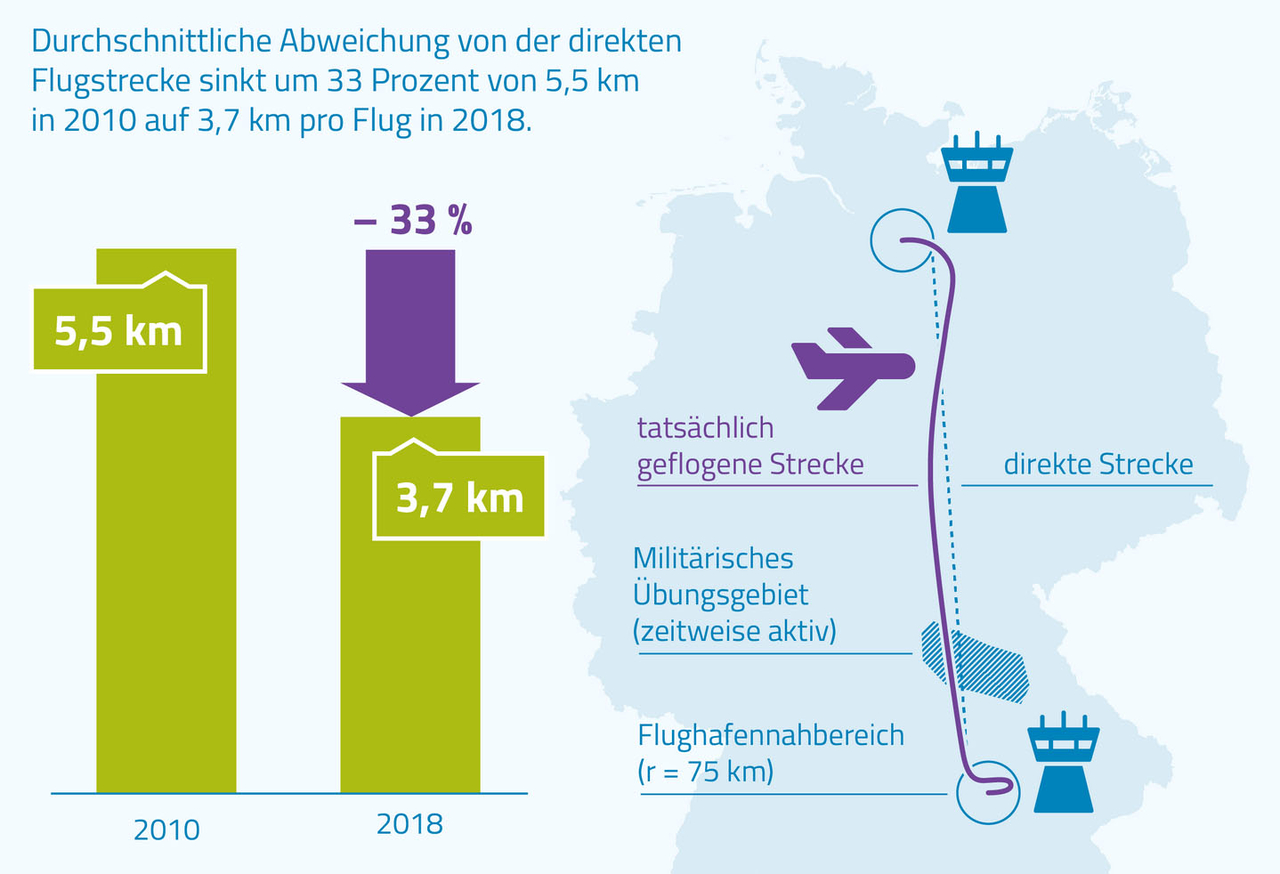Single European Sky
Reboot for the Climate
Kerosene is wasted in Europe’s skies and unnecessarily high amounts of CO₂ are emitted. Because air space is fragmented, and national air traffic control centres use different technologies. For many years the EU has been wanting to bring about the Single European Sky (SES). Harmonisation of the air space, for example by means of technological modernisation, would be a real measure to protect the climate: up to 10 per cent of CO₂ emissions could be saved on European flights this way.
Creating Investment Incentives
It is not only air traffic control that has to make considerable investments in climate and environmentally friendly air traffic. The airlines also have to fit their aircraft with state-of-the-art technology and train pilots. Those that do this should be rewarded for doing so and the aircraft that have been equipped accordingly should be given preferential treatment for take-off, landing and traffic routing. The federal government should now enshrine this “best equipped – best served” approach in the Air Traffic Control Implementation Ordinance.
Global air traffic will continue to grow. As well as fuel-efficient aircraft and investment in synthetic fuels, sustainable air traffic urgently needs a reform of air traffic management (ATM) in Europe. A Schengen of the skies is as overdue as it is complex. It touches on questions of national sovereignty. Solutions must be found in an interaction between all national and European players and in dialogue with the industry.
To create the conditions for an efficient and lower emission use of air space, the federal government should use its presidency of the EU Council to bring about the necessary breakthrough in SES together with the European institutions and the other member states. Airlines, airports and air traffic control want to help to bring this major climate policy project to success. There are three central tasks:
- Making efficient use of air space: Germany’s air traffic control works hard at getting planes to their destinations without any diversions where possible. And with great success. Between 2010 and 2018, the deviation from the ideal line fell by a third. As a result, in 2018 alone 76,000 tonnes less CO₂ were emitted in German air space. To achieve comparable results on European international routes, the air space structures will need to be harmonised.
- Introducing interoperable air traffic control systems: Some of the technologies used by air traffic controllers in Europe date back to the 1970s and are therefore outdated. The automated division of labour with colleagues from neighbouring countries all too often fails due to incompatible systems. There is an urgent need for improvement here and we must press ahead with the necessary modernisation.
- Making the Ways of Deploying Air Traffic Controllers More Flexible and Increasing their Availability: Some air traffic control systems in Europe have too few air traffic controllers, especially in the upper air spaces. Therefore, this year thousands of routes are planned in the lower air space to relieve the upper air spaces – the kerosene consumption will therefore rise by an average of 60 kilograms per internal flight in Germany. To compensate for acute staff shortages in individual control centres, work must concentrate on deploying air traffic controllers more flexibly.
CO₂ Reduction by means of Efficient Air Traffic Control: 1.6 tonnes per flight = 10 per cent of total emissions
Average values for flights within Europe

Creating Investment Incentives
It is not only air traffic control that has to make considerable investments in climate and environmentally friendly air traffic. The airlines also have to fit their aircraft with state-of-the-art technology and train pilots. Those that do this should be rewarded for doing so and the aircraft that have been equipped accordingly should be given preferential treatment for take-off, landing and traffic routing. The federal government should now enshrine this “best equipped – best served” approach in the Air Traffic Control Implementation Ordinance.
Further content on the topic
Position Paper
Expanding Capacity and Increasing Efficiency in European Air Space
Proposal for increased initiatives by the EU and its member states

Website
Reducing Diversions
How can diversions be reduced? What does SESAR mean and what does FABEC stand for? The climate protection portal of the Federal Association of the German Aviation Industry [Bundesverband der Deutschen Luftverkehrswirtschaft (BDL)] provides the relevant background information.
